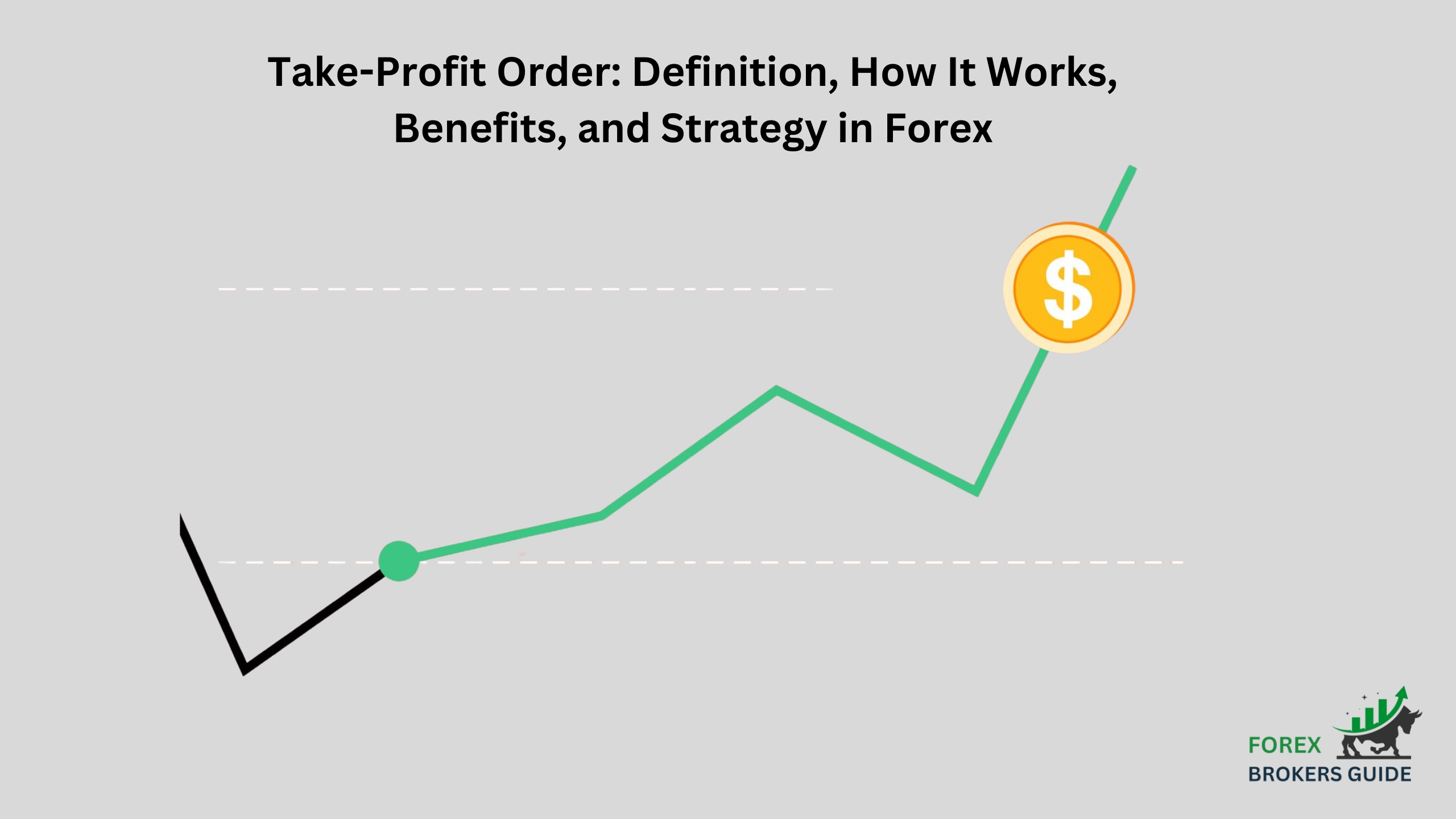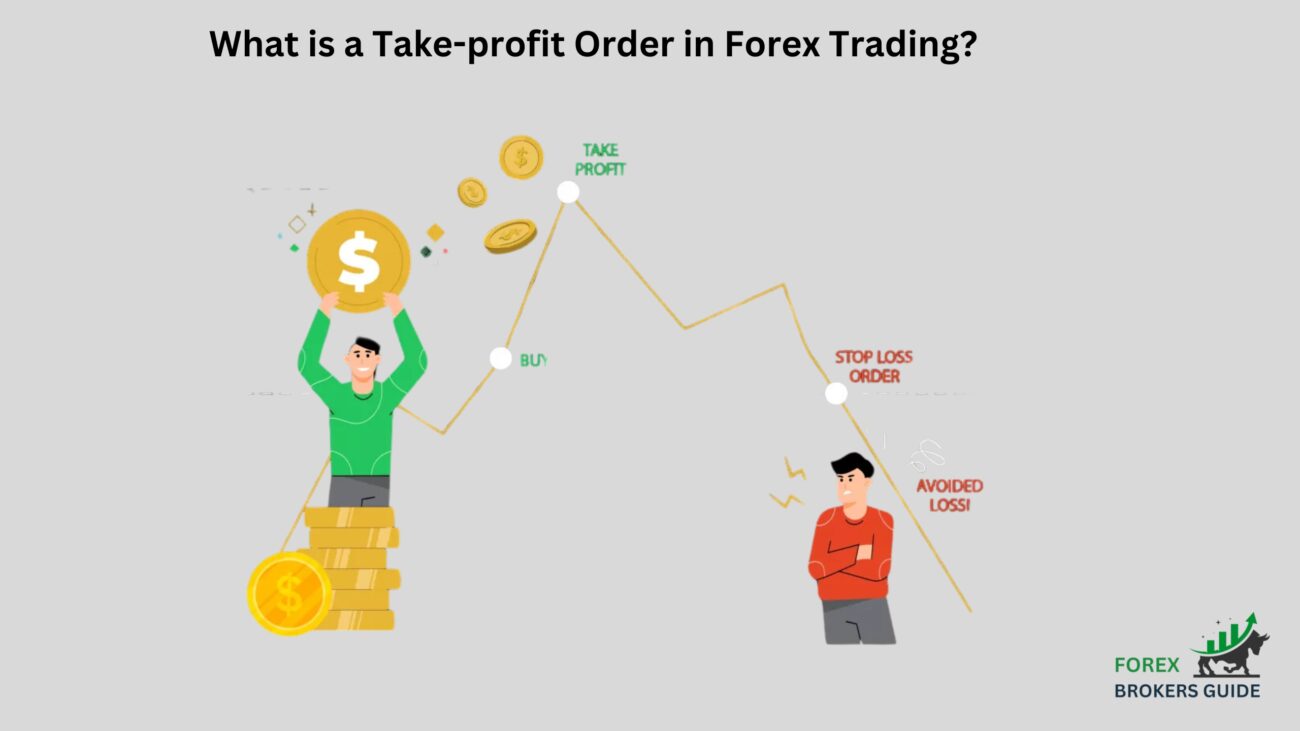
Take-profit orders function on the opposite end of the spectrum. They are essentially pre-defined exit points set at a desired profit level. Once the market price reaches this level, the take-profit order automatically closes your position, locking in your gains. This helps prevent the allure of greed from overriding your trading plan and ensures you capture profits when the market moves in your favor.
Take-profit orders can be placed with forex brokers in various ways, including setting a specific price level, a percentage gain from the entry price, or a combination of both. By incorporating take-profit orders into your trading strategy, you can approach the market with a clear objective and avoid the temptation to hold onto a winning position for too long, hoping for further gains that might not materialize. This instills discipline and helps you manage your risk-reward ratio effectively.
What is a Take-profit Order in Forex Trading?
A take-profit order is a pre-defined instruction to your broker to automatically close your position at a specific price or percentage gain. This essentially locks in your profits and prevents emotions from influencing your decisions.

Imagine you buy a currency pair expecting it to rise in value. You can set a take-profit order at a specific price level that represents your desired profit target. If the market price reaches that level, the take-profit order is automatically triggered, selling your position and securing your gains. This removes the temptation to hold onto a winning trade for too long, hoping for even more profit that might not materialize.
How does a Take-profit Order differ from a Market Order or a Limit Order?
While all three order types (take-profit, market, and limit) are used in forex trading to manage positions, their functionalities differ significantly. Here’s a breakdown:
- Take-Profit Order: As explained earlier, a take-profit order is a pre-defined instruction to your broker to automatically close your position at a specific price (profit target) or a percentage gain. It essentially guarantees your profit if the market reaches that level.
- Market Order: A market order instructs your broker to buy or sell a currency pair at the best available market price at the time the order is placed. Market orders are ideal for situations where immediate execution is the priority, but there’s no guarantee of the exact price at which the order will be filled.
- Limit Order: A limit order allows you to specify a desired price at which you want to buy or sell a currency pair. Your broker will only execute the order if the market price reaches your predetermined limit price (or a better price for you). Limit orders offer more control over execution price compared to market orders, but there’s no guarantee the order will be filled, especially in volatile markets.
Here’s a table summarizing the key differences:
| Feature | Take-Profit Order | Market Order | Limit Order |
|---|---|---|---|
| Function | Closes position at profit target | Buys/sells at best available market price | Buys/sells at specified price or better |
| Guaranteed Execution | Yes (if market reaches target) | Yes | No |
| Price Control | Yes (sets target profit or % gain) | No | Yes (sets limit price) |
| Priority | Securing profits | Immediate execution | Price control |
Why are Take-profit Orders valuable tools for Forex Traders?
Take-profit orders are invaluable for forex traders because they automate profit-taking, reducing emotional influence. By pre-defining your exit strategy, you lock in gains at your target price and avoid the temptation to hold on for potentially elusive further profits. This instills discipline, improves risk management, and reduces stress by letting you focus on new opportunities with a clear outcome.
Imagine buying EUR/USD at 1.1000 with a take-profit at 1.1200 (200 pips). If the price reaches 1.1200, your order automatically closes the position, securing your profit and freeing you to pursue new trades.
How can Take-profit Orders help Secure Profits and limit emotional Trading Decisions?
Take-profit orders are a forex trader’s best friend when it comes to securing profits and avoiding the pitfalls of emotional trading. Here’s why they’re so valuable:
- Automated Profit-Taking: Take-profit orders remove human error from the equation. By pre-defining your exit point at a desired profit level, you ensure your gains are automatically locked in when the market reaches that price. This eliminates the need for constant monitoring and impulsive decisions based on short-term market fluctuations.
Imagine you buy GBP/USD at 1.3000, anticipating a rise due to strong UK manufacturing data. You set a take-profit order at 1.3200, representing a 200-pip profit target. With this order in place, you can confidently step away from the screen, knowing your profits are secured if the price reaches 1.3200.
How are Take-profit Orders placed and Executed in Forex Trading?
Placing take-profit orders is a straightforward process on most forex trading platforms. You can choose between limit orders, specifying a desired price to lock in profits, or trailing stop-loss orders that automatically adjust as the market moves in your favor. Once placed, the order becomes active and waits for the market price to reach your take-profit level. When triggered, your broker automatically closes your position at the prevailing market price, securing your gains. However, with limit orders, there’s a chance of slight slippage, meaning the fill price might not be your exact take-profit target due to market volatility. Understanding placement and execution is crucial for effectively using take-profit orders to manage your forex trades.
What factors can influence the Potential Slippage between the Desired Price and the Filled Price?
Even with a well-placed take-profit order, there’s a chance you might not get the exact price you envisioned due to a concept called slippage. Here’s what can influence the potential difference between your desired take-profit price and the actual filled price:
- Market Liquidity: Forex markets thrive on liquidity, the ease with which currencies can be bought and sold. In a highly liquid market, there are typically enomugh buyers and sellers to ensure smooth execution of orders at the desired price. However, in a less liquid market, there might be fewer participants, making it harder to find a matching order at your exact take-profit level. This can lead to slippage, where your order gets filled at a slightly less favorable price (for long positions) or slightly more favorable price (for short positions).
- Order Size: The size of your trade can also influence slippage. Large orders, especially in less liquid markets, can be more difficult to fill at your exact take-profit price. If there aren’t enough counterparty orders at your desired level, your broker might need to slice your large order into smaller chunks to get it filled, potentially at slightly different prices, causing slippage.
- Market Volatility: Highly volatile markets are susceptible to rapid price fluctuations. When the market price moves quickly, it might be challenging for your take-profit order to be filled at your exact price before the price changes. This can lead to slippage, especially if your order type is a limit order with a specific price target.
- Order Type: The type of take-profit order you choose can also play a role in slippage. Limit orders, which aim for a specific price, are more susceptible to slippage compared to trailing stop-loss orders. Trailing stop-loss orders are more flexible as they adjust to the market movement, but they can still experience some slippage if the market becomes very volatile.
How can Take-profit Orders be integrated into various Trading Strategies?
Take-profit orders are essential tools for managing risk in any trading strategy. By setting a pre-determined price level to automatically exit a winning position, traders can lock in profits and avoid the potential for the trade to reverse course. This helps to establish a defined risk-reward ratio, ensuring that potential losses are limited while allowing for profitable trades to flourish.
Many trading strategies rely on technical indicators to generate entry and exit signals. Take-profit orders can be seamlessly integrated with these indicators to provide a more comprehensive trading approach. For example, a trader using a moving average crossover strategy to identify trends might set take-profit orders a specific percentage above the moving average for long positions (buy orders) and vice versa for short positions (sell orders).
For trend-following strategies, trailing take-profit orders can be a valuable tool. These orders are dynamically adjusted as the price moves in the favorable direction. For instance, a trader might set a trailing take-profit order that remains a fixed percentage above the current price of the asset. This allows profits to accumulate as the trend progresses but ensures that some profits are secured if the price movement stalls or reverses.
Some traders prefer to scale out of positions gradually rather than exiting entirely at a single take-profit level. This can be achieved by placing multiple take-profit orders at different price points. This strategy allows traders to lock in some profits while maintaining some exposure to potentially continue profiting if the price keeps moving favorably.
When might a Forex Trader consider using a Take-profit Order?
Take-profit orders are a valuable tool for forex traders, offering strategic advantages in various situations. The most common use case is to secure profits. By setting a take-profit order, a trader can automatically exit a winning position at a predetermined price level. This shields them from the market’s unpredictable nature, preventing a potential reversal that could erase profits entirely. This is especially valuable for short-term traders capitalizing on swift price movements.
Beyond securing profits, take-profit orders are a cornerstone of risk management. They establish a defined risk-reward ratio, which compares the potential profit to the maximum acceptable loss on a trade. By setting a take-profit level, traders limit their downside while allowing winning trades to breathe. This ensures they don’t risk more than they’re comfortable with while maximizing potential gains.
Take-profit orders also integrate seamlessly with many forex traders’ technical indicator strategies. Imagine a trader using a moving average crossover strategy to buy a currency pair when the price surpasses a specific moving average. They could set a take-profit order a specific percentage above that moving average. This capitalizes on the uptrend while automatically exiting if the price stalls or reverses.
Are there any advanced Take-profit Order types that can be beneficial?
Advanced take-profit options can enhance a forex trader’s toolkit. Trailing stop-loss take-profit automatically adjusts the take-profit level as the price moves favorably, securing profits while letting trends run. One-Cancels-the-Other (OCO) orders combine take-profit and stop-loss orders, automatically canceling one when the other triggers. This simplifies exit strategies and protects against sharp reversals.
